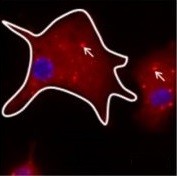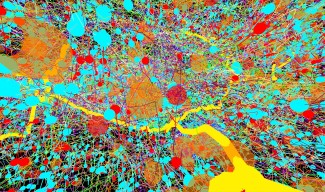The ICEBERG cohort, initiated 10 years ago, is interested in studying factors predictive of the onset and progression of Parkinson’s disease.
Like these freshwater blocks, 90% of whose volume is below the surface of the water, the “Iceberg project” assumes that Parkinson’s symptoms are only the late manifestations of a larger set of lesions and detectable symptoms before clinical motor manifestations.
ICEBERG Cohort: Hope for Better Prediction of Parkinson's Disease
The ICEBERG cohort, comprising a total of 300 individuals, consists of patients with parkinson's disease who have been in progress for less than 4 years, subjects at risk of developing the disease, sleep disorders with rapid eye movements, and control subjects with no predisposition to develop the disease.
The project consists in following the participants of the cohort for 4 years and collecting biological, clinical, neuropsychological and brain imaging data during an annual visit with 3 main objectives:
- Deciphering the physiological mechanisms underlying disease to improve diagnosis and provide personalized therapeutic management
- Identify and validate robust, reproducible and symptom-sensitive markers (preclinical and clinical) to predict disease onset and progression.
- Identify patient subgroups with different evolutionary profiles for integration into tailored clinical trials
Nearly 20 articles published
Since 2021, analysis of the data collected during these visits has resulted in the publication of nearly 20 scientific papers, some of which have been published in prestigious journals such as JAMA Neurology.
As a result of the follow-up of the cohort and among the significant advances of recent years, it has been shown that:
- The decrease in the amount of neuromelanin, a protein that plays a protective role in neurons, a marker of progression of loss of dopaminergic neurons is visible in MRI and increases over time, giving this molecule a strong interest in evaluating the effectiveness of treatments on disease progression in future clinical trials, to learn more about
- Subtle alterations in eye movements prior to the onset of walking and balance disorders.
- A decrease in the level of neuromelanin, pigment contained in the dopaminergic neurons of the black substance and regions involved in REM wakefulness and sleep, visible in MRI before the appearance of the first symptoms.
- Over 70% of individuals with an isolated REM sleep behaviour disorder (iMRD) develop Parkinson's disease during follow-up.
- A set of voice modifications can linearly and significantly predict clinical and imaging outcomes for early detection and follow-up of Parkinson’s disease.
All of these results are promising because they would predict the onset of Parkinson’s disease with a small margin of error.
The ICEBERG cohort received first support from the Fondation Groupe EDF and then from the Fonds Saint-Michel.

The team aims to discover why we sleep and dream and understand the mechanisms of neurological sleep disorders to treat them better. Both clinical and basic research axes investigate hybrid states between wake and sleep, using neurophysiological...
Read more
Parkinson's disease
Parkinson’s disease is the second-most common neurodegenerative condition after Alzheimer’s disease, and the main cause of Parkinsonian syndrome.
Read more






